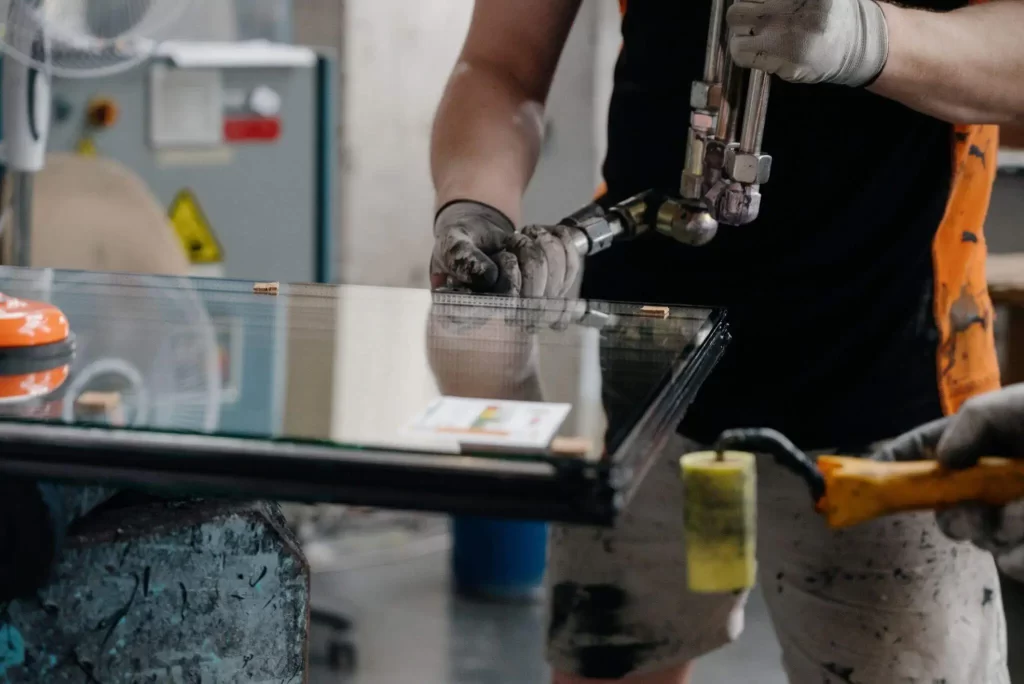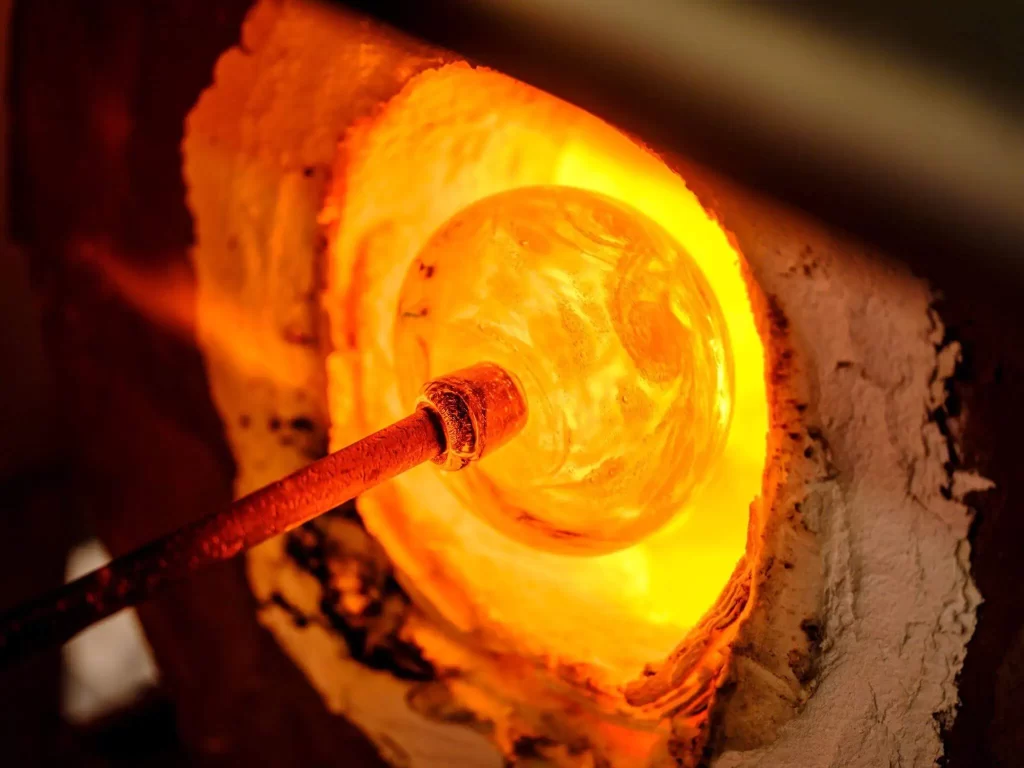
Table of Contents
Glass windows are integral to every home, providing natural light, ventilation, and a clear view of the outdoors. They are essential in building design, allowing inhabitants to connect with nature while maintaining a comfortable and secure indoor environment. From simple casement windows to elaborate bay windows, glass windows come in various styles and sizes, catering to diverse architectural needs and personal preferences.
The process of manufacturing glass windows is fascinating and involves several stages. It starts with selecting raw materials, forming glass sheets, cutting and grinding, tempering, insulation, assembly, and quality control. Each step plays a crucial role in creating high-quality glass windows that meet the requirements of builders, architects, and homeowners. This article will examine the steps in making glass windows, exploring the techniques and technologies employed to produce durable, energy-efficient, and visually appealing products. You can call us at tel:+1 602 300 0851
Check out our high quality products here:
Main Ingredients Of Glass Windows
- Sand: The primary ingredient, sand, gives the glass transparency. Silica, usually in the form of quartz, makes up about 70% of the glass composition.
- Soda ash: Acts as a melting agent, reducing the sand’s melting point, thus saving energy.
- Limestone: It adds durability and prevents the glass from becoming water-soluble.
- Others: Depending on the desired properties, manufacturers might add alumina, ferric oxide, barium oxide, magnesia, and other compounds.
The Glass Melting Process
The glass melting process is the first step in creating glass. Raw materials such as silica sand, soda ash, and limestone are loaded into a furnace and heated to extremely high temperatures, typically between 1400°C and 1600°C. The melting process involves several stages, including:
- Preheating: The raw materials are heated to a high temperature, usually around 800°C, to remove moisture and impurities.
- Melting: The raw materials are heated further until they melt into molten glass.
- Homogenization: The molten glass is stirred and mixed to ensure uniform consistency and color.
- Finishing: The molten glass is formed into the desired shape using various techniques such as blowing, pressing, or casting.

Formation Of The Window
Once the molten glass has been formed, it is processed into the desired shape and size for the window. This can be done using various techniques such as:
- Cutting: The molten glass is cut into the desired shape and size using specialized tools and machines.
- Grinding: The edges of the glass are ground to remove any rough spots and achieve the desired smoothness level.
- Polishing: The glass is polished to remove any scratches or imperfections and to give it a glossy finish.
- Tinting: The glass may be tinted with dyes or pigments to reduce glare, block UV radiation, or improve aesthetics.
- Coating: The glass may be coated with a thin material layer to reduce reflectivity, improve energy efficiency, or provide additional benefits.
Annealing: Cooling And Strengthening
Annealing is the process of slowing cooling the glass to relieve any stresses that may have built up during the manufacturing process. This is done by heating the glass to a temperature just below its transition temperature, holding it there for a period of time, and then gradually cooling it over a controlled period. The annealing process helps to:
- Relieve stresses: The slow cooling process helps relieve any stresses that may have built up in the glass during manufacturing.
- Improve strength: Annealing increases the strength and resistance of the glass to thermal stress.
- Reduce breakage: Proper annealing reduces the likelihood of breakage due to thermal stress.
Additional Processes
In addition to the basic steps involved in glass production, several additional processes may be used to enhance the properties of the glass. These include:
- Tempering: Tempered glass is made by heating the glass to a high temperature and then rapidly cooling it. This process makes the glass more robust and less likely to shatter.
- Laminating: Laminated glass is made by bonding two layers of glass together with a resin interlayer. This makes the glass more resistant to breaking and reduces the risk of injury from broken glass.
- Low-E coating: Low-emissivity coating is applied to the glass to reduce heat transfer. This means the glass will lose less heat in cold weather and gain less heat in warm weather, making it more energy efficient.
Safety Features In Glass Windows
Glass windows can be designed and manufactured with various safety features to minimize the risk of injury from broken glass. One such feature is laminated glass, which is made by bonding two layers of glass together with a resin interlayer. This makes the glass more resistant to breaking and reduces the risk of injury from broken glass. When laminated glass does break, it tends to crack rather than shatter, and the interlayer helps to hold the glass together, preventing sharp shards from flying everywhere. Laminated glass is commonly used in applications where safety is a concern, such as automobile windshields and shower doors.
Environmental Impact And Recycling
Glass production has a significant environmental impact due to the high energy requirements and use of non-renewable resources, resulting in greenhouse gas emissions and contributions to climate change. The extraction and processing of raw materials, such as silica sand and limestone, can also adversely affect local ecosystems and wildlife habitats. Additionally, glass can be recycled and reused multiple times without losing its quality, further reducing the demand for virgin materials and decreasing the environmental impact of glass production.
Contact Us For Unique Products And Services
Conclusion
Glass windows mix raw materials like sand, soda ash, and limestone to create molten glass. This molten glass is formed into sheets using various techniques like float, rolled, or cast glass. The glass sheets are cut and ground to size and may undergo additional processes like tempering, insulating, and coating to enhance their strength, energy efficiency, and appearance. Finally, the glass components are assembled into wood, metal, or vinyl frames and undergo quality control checks before being shipped to customers.
If you’re looking for quality glass fitting services or need glass manufacturing expertise, HalsInternational is your trusted partner. Contact us today to explore our comprehensive glass solutions.
Frequently Asked Questions:
Glass is transparent because it doesn’t absorb or reflect light within the visible spectrum, allowing it to pass through.
Tempered glass is more substantial than regular glass due to heat or chemical treatment.
From melting to annealing, it can take several hours to a few days, depending on the type and size of the glass.
Most glass windows can be recycled, but windows with certain coatings or treatments might need unique processes.
While sand is the primary ingredient, some research explores alternatives like recycled glass and other minerals.
